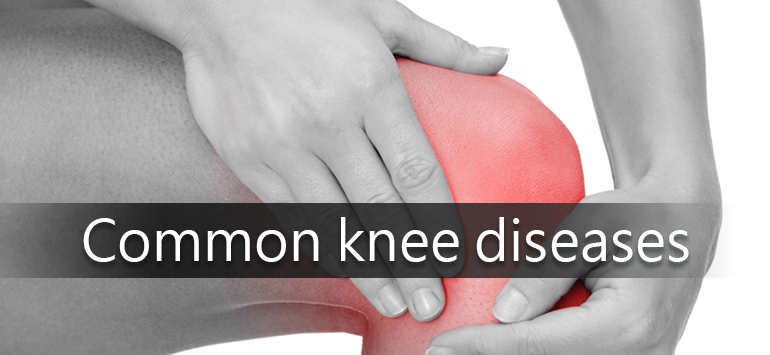Trauma
A single but large force or multile smaller forces that exceed what an orgnism can bear may cause such damage as fructure, tearscartilage tears, meniscus tears, ligament tears, muscle pulls, tendon injuries, and tendonitis. Unless properly treated early, these damage may add up to compromise the delicate structure of the knee and diminish its ability to protect the cartilage.
Arthritis
Osteoarthitis
Worn cartilage and bone spurs in the knee joint and the gradual deformity of the knee. More than 90 percent of the cases are of unknown origin, and the remaining cases are secondary osteoarthitis caused by exisiting conditions such as side effects of prior knee traumas or inborn deformity.
Traumatic arthritis
can be divided into two types:
♦ Direct injury to cartilage.
Impact may lead to intra-articular fracture which may cause the cartilage on the articular surface to recede or flake, gradually leading the joint to deform.
♦ Indirect damage due to damage to other tssues.
For example, tears cause meniscus to lose its capacity to protect, ligament tears deminish the stability of the joint, or malunion may gradually lead to the abrasion of the surface of the articular capsule that in turn leads to osteoarthitis.
Rheumatoid arthitis
Its pathgenesis unspecific, rheumatoid arthritis may occur in any joint in the body. It often inflicts on multiple sites and it is symmetric. The inflicted joint may swell and stiffen in the beginning and progress to severe deformity. It degrades the quality of life of its sufferers over a long period of time.
Crystal arthritis (of which gouty arthritis is most common)
Uric acid crystals may settle in a joint or its surrounding tissues of chronic hyperuricemia sufferers and lead to arthritis.
Septic arthritis
It often inflicts on a single joint with concurrent symptoms of fever, chill, and swollenness. If not treated timely, it can damage the cartilage and cause the joint to become unserviceable.

